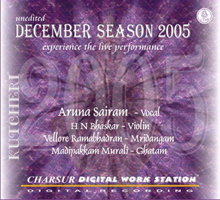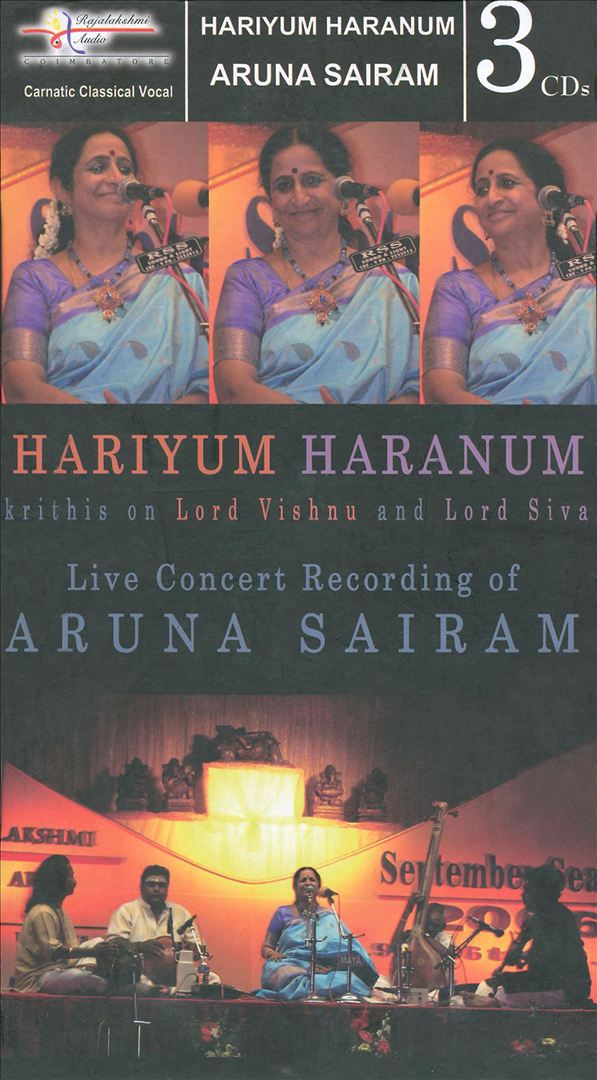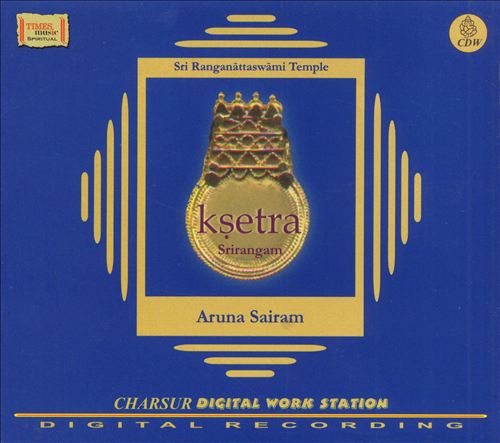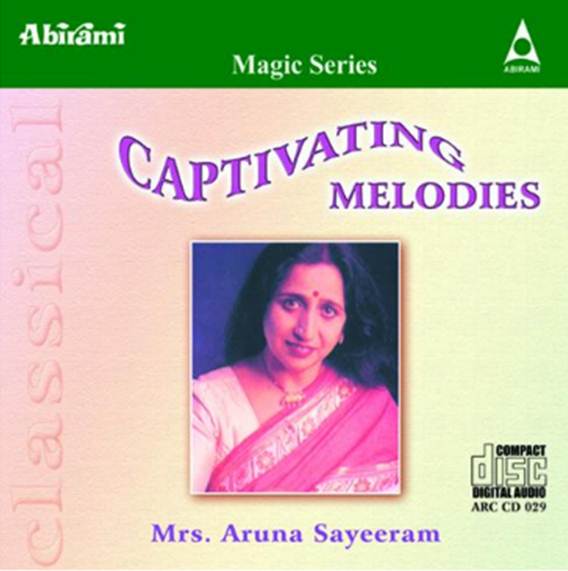What makes Carnatic vocalist Aruna Sairam a legend
-
In an exclusive interview, Sairam talks about the world of Carnatic music, learning from the legendary T Brinda and knowing how to keep the clutter out of her voice
At a recent concert held at Kuchipudi dancer duo Radha-Raja Reddy’s dance gurukul in the Capital, Aruna Sairam, 70, Carnatic vocalist and one of the form’s foremost names, concluded the headlining act with Kalinga Narthana thillana. A composition by famed 18th-century composer Oothukadu Venkata Subbaiyer, the piece eulogises the story of Krishna’s mythical battle with the dreaded Kaaliya Nag as he danced on its hoods in the Yamuna. Unlike most old-school classical musicians, who expect veneration and musical discernment from their audience, Sairam explained her piece in detail before diving into it.
As she tamed the piece in her bass voice, vocalising hissing sounds of the serpent along with intricate rhythmic vocalisations of Krishna’s battle dance, the genuineness in her storytelling through the interlacing of technique and bhaav took one far away from the existential struggles of the modern life. Sairam’s sonic idiom deftly unspooled this allegorical scene for an audience, many of whom did not understand the language she was singing in. According to Kuchipudi exponent Raja Reddy, who was present at Sairam’s Delhi concert, “After the legendary M Balamuralikrishna ji, if there is a Carnatic singer that one should listen to, it’s Aruna Sairam,” he said.
About 10 days after this concert, Sairam was on a stage on the banks of river Ganga at Mahindra Kabira Festival, Varanasi. This time it was an ode to goddess Parvati – Aam pahi meenambike in the heptatonic Kalyani combined with a German hymn, an ode to Virgin Mary, that she’d learned in 1987 from French musician Dominique Vellard, an authority on Gregorian and medieval chants.
“If it’s a Chennai audience, I see to it that the intellectual stimulation is in place. That is where the technicalities are noticed more. If I am singing in Delhi, people want the bhaav, the sense of what I am singing. Here, they may not enter the piece through the technique or its wisdom but through the feeling of its context. In Europe, Krishna and Ram are nobodys and there is no context, but then I have the same repertoire to work with. So the approach to present the same thing will be more abstract and won’t depend so much on context,” says Sairam, in a conversation over lunch at a coffee shop in the Capital.
In the past, Sairam’s approach to Carnatic music has been met with skepticism, but it hasn’t bothered her. “Not because I was or am a rebel but because I am myself. My temperament is not conformist,” says Sairam, who was conferred the Sangeetha Kalanidhi Award – considered the highest honour in Carnatic classical music – in 2018, by a century-old Music Academy. Some of the other names who’ve won the award include violin legend T Chowdiah (1957), vocal virtuosos MS Subbulakshmi (1968), DK Pattamal (1970) and M Balamuraikrishna (1978) among others. More recent names include vocalists Sudha Raghunathan (2013), Sanjay Subrahmanyan (2015) and S Sowmya (2019).
“I must give it to Madras, people there had that integrity and intellectual acceptance to understand my art and give this to me on my own terms. The award was a culmination of this long journey,” says Sairam, who in the past two decades, has emerged as one of the more modern, versatile, and amenable musicians of our times, extending boundaries and yet finding herself rooted in tradition. “True traditionalists are always open-minded,” she says.
Sairam credits her upbringing in Mumbai for her broad and cultivated approach to her artform. She grew up in a liberal household with parents who were cultural impresarios and hosted a slew of artistes in their small railway quarter in Matunga. Legends like Ustad Amir Khan, Ustad Bade Ghulam Ali Khan, M Balasaraswati, MS Subbulaksmi and T Brinda, among others, would all make their way to Sairam’s house for food and conversations. “Most South Indian artistes wanted to just eat the food they liked and feel at home,” she says.
“There was never any difference of North or South in our house. It was just music,” adds Sairam who was influenced massively by film music on the radio and bhajans and abhangs that she heard women in her neighbourhood sing. In fact, the latter is a significant element in Sairam’s concerts.
Sairam was about 10 and had begun learning under her mother and Carnatic classical teacher Rajalakshmi Sethuraman. But it was a visit from the iconic T Brinda (foremost representative of the Veena Dhanammal legacy), about 60 then, to her home that would steer Sairam’s life in an unwavering space that was entrenched in music. Brinda had come to teach her senior students and Sairam’s house was the venue. “I stood in a corner and heard as nobody was allowed into the room. The next day, I was humming what she’d taught the previous day. It was the following year that she offered to teach me,” says Sairam. “As a guru, she was exacting, but outside of that space, she was like a doting grandmother. She’d even oil my hair and pull lice out of them,” recalls Sairam with a chuckle.
When Brinda stopped teaching Sairam learned from vocalist Bombay S Ramachandran took over. She went on to learn from AS Mani, a disciple of Carnatic vocalist Tiger Varadachariar, who felt that Sairam needed to dig deeper. Mani made her find newer dimensions within the framework. By now Sairam was in her early 20s and performing in junior slots in the December music season.
In 1987, Sairam was invited by a German conservatory to be a visiting professor, where she was able to relate to the music of Bach, Beethoven and Mozart but felt a lack of curiosity from the western musicians who weren’t very open to Carnatic classical music.
By now, Sairam was 35 and a mother to two young children and still figuring out her voice. She went to German voice teacher Eugene Rabine who helped her find the potential that her voice had but wasn’t delivering. With New York-based David Jones, a voice teacher, she further honed her skills, leading to music halls overflowing with people. Sairam also asked Carnatic singer M Balamuralikrishna for advice, who shared practice techniques that she follows even today. “Mine is an alto voice. So to make it express varied shades and colours, I needed to be polished. I wasn’t singing badly, but I felt the need to hone it more and find varied directions with it,” says Sairam. She understood that there was nothing like a ‘perfect voice’ and that she didn’t need clinical perfection but be in a space where she was satisfied. “I felt that if I could express myself without any clutter, that would be a good voice,” says Sairam, “In the beginning, there is this angst to prove yourself. Now, years later, I’m not trying to show something that I’m not. Whatever I am – good, bad, indifferent, this is what it is and I offer it with humility.”
After a hectic year of concerts, Sairam has decided to skip the 2022-23 music season in Chennai. “Since 1973, there was never a December when I was at home. I think it’s about time that I savour and enjoy the season,” says Sairam.
Related Albums

Chennai December Seaso...
Published : 2006
By : CHARSUR DIGITAL...
Hariyum Haranum
Published : 2006
By : Rajalakshmi Audio
Ksetra - Srirangam
Published : 2001
By : Charsur Digital
Captivating Melodies
Published : 1999
By : Abhirami Recording
Related Concerts
- Sri Rama Navami Celebration and Music Festival
On : Friday, April 6, 2012 - Sri Rama Navami Celebration
On : Thursday, April 18, 2013 - Carnatic Vaibhavam Rajalakshmi Memorial Concert
On : Sunday, March 20, 2016 - Abbas Kalai Vizha
On : Saturday, January 19, 2019

 Photos
Photos